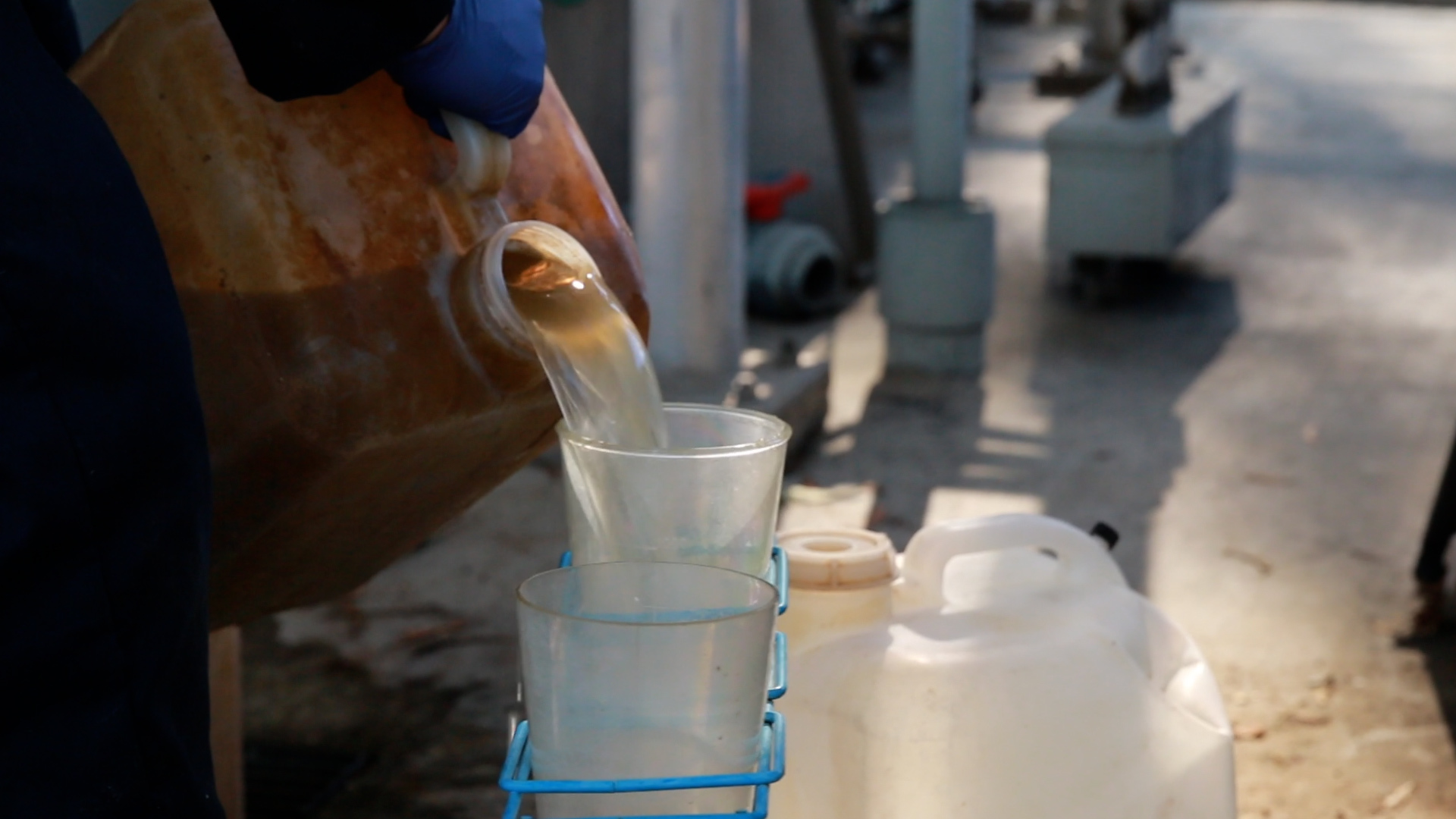Every time we flush the toilet, clues about our health go down the drain. Since wastewater carries pathogens from our bodies, it is a promising pathway for identifying emerging public health challenges. With funding from Stanford Woods Institute for the Environment, researchers are developing efficient and accurate approaches to detect bacteria in wastewater. Their work could lead to more timely and comprehensive guidance on issues such as drug-resistant bacterial infections, respiratory diseases, and sexually transmitted diseases caused by bacteria.

Stanford researchers use wastewater collected from the university's campus at Codiga Resource Recovery Center to test new techniques for early disease detection. | Madison Pobis
“If we can find a way to rapidly and easily provide dependable data from wastewater, it could be a game-changer,” said Alexandria Boehm, a professor of civil and environmental engineering in the Stanford Doerr School of Sustainability and Stanford School of Engineering and one of the project’s principal investigators. “It could help people make better decisions to protect their health, and alert medical workers to look for symptoms of emerging diseases, such as tuberculosis, in their patients.”
To identify specific bacterial pathogens in wastewater samples, scientists typically bind uniquely shaped enzymes to matching pathogens like puzzle pieces. To screen across all bacteria and their antibiotic resistances, the process would require thousands of enzymes, and may fail given high genetic similarity between different bacteria. To find a better approach, Jennifer Dionne, a professor of materials science and engineering in the School of Engineering, partnered with Boehm. Dionne uses nanophotonics – the study of how light behaves with objects – to detect bacteria in clinical samples like blood and urine, while Boehm refines techniques for identifying a range of pathogens in wastewater.
Dionne and Boehm had known each other casually for years. During a surprise meeting at a campus coffee shop, they started brainstorming how Dionne’s work on detecting bacteria in medical settings could be applied to Boehm’s focus on environmental issues and wastewater-based epidemiology. The challenge they saw was scaling available pathogen detection methods to handle dozens if not hundreds of potential pathogens.
“We started talking about the pros and cons of the methods people use to detect bacteria and the potential pros and cons of the sensing methods that Jenn was developing for clinical samples,” Boehm said. “We imagined an idealized end product, almost like a magic wand or light that you can shine on wastewater and just sense what's present.”
To keep the conversation fresh in their memory, Boehm presented Dionne with a liter bottle of wastewater from her lab.
I had never been so delighted to carry other people’s waste. I remember chuckling and thinking that one person’s trash is another’s treasure. With that bottle, we were able to kick-start all kinds of new experiments to detect bacteria in wastewater.”Jennifer DionneProfessor of Materials Science and Engineering
Light uncovers bacteria
Through a grant from the Woods Institute’s Environmental Venture Projects program, Dionne, Boehm and researchers in their labs are developing a method that uses light to identify wastewater-borne bacteria and their characteristics, like antibiotic resistance. The process goes something like this: researchers allow wastewater to flow over a glass surface with patterned metallic electrodes. Then, they run a low voltage across the electrodes to attract bacteria toward the surface. Afterwards, the researchers expose the surface to a light source, such as a laser or light-emitting diode, that has a specific wavelength. When the light hits a cell, which contains molecules that naturally vibrate, the light’s wavelength or color changes. Based on the new color that bounces off the surface, the researchers can identify crucial information, including the quantity of bacteria present in the sample, their species, strains, and resistance or susceptibility to antibiotics.
Catalyzing solutions
This project was funded by the Woods Institute’s Environmental Venture Projects grants program. Get more news about Woods-sponsored research on our In Focus page, or by signing up for our newsletter and seed grant announcements at the link below.
Wastewater impurities, like metals and organic molecules, can cause background signals that can mask important features of the bacterial pathogens. To overcome this challenge, the team has trained machine learning models to ignore distracting background material in a sample, and zero in on bacteria based on their unique color signature as cataloged by the team previously. The process is similar to how Google Images identifies a photo of a cat, regardless of the photo’s background, once the model understands what a cat is.
To ensure the method is viable, the researchers need to do hundreds of thousands, if not millions, of tests that reflect the wide range of conditions in wastewater. The Woods Institute-funded pilot project is helping them kick-start these studies with the help of Liam Herndon, a chemical engineering PhD student, and Yirui Zhang, a materials science and engineering postdoctoral scholar supported by a Schmidt Science Fellowship. “A really unique thing about Stanford is that it brings together a school of engineering, a school of sustainability and other schools within a few minutes’ walk of each other. So it's very easy to do the interdisciplinary, collaborative work we need,” Dionne said.
The goal – rapid, accurate bacterial pathogen identification and characterization – is worth the time and effort for Boehm and Dionne.
For more information
Boehm is also a professor of Oceans in the Stanford Doerr School of Sustainability, a senior fellow at the Stanford Woods Institute for the Environment, a member of Stanford Bio-X and the Maternal & Child Health Research Institute.
Dionne is also a professor of radiology at Stanford Medicine, by courtesy, a member of Stanford Bio-X, the Cardiovascular Institute, and Wu Tsai Neurosciences Institute, and a senior fellow at the Precourt Institute for Energy.